-
Requiem for an Icon: Director's concept
The opera is a portrait multiple of Jackie Kennedy, focusing not on her biography, but the way this woman went down in American history as the legendary First Lady and fall victim to her image. The production oscillates between real events and visions of a disturbed pshyche.
Requiem for an Icon studies a woman entangled in politics, dependent on men, helplessly attempting to free herself of her image, to show the world who she really is. With subsequent scenes we enter a dreamlike reality deeper and deeper as Jakie projects images and figures. The protagonist is split as well. Jakie the singer is the real Jackie – lying in a hospital bed, fighting with cancer. Her doppelganger, an actress, is a woman-chamealion. Her experience – along with the story of real Jackie – undergoes constant methamorphoses on stage, bringing us closer not to an icon, but a normal woman.
-
Requiem for an Icon: Synopsis
INTROITUS
A hospital. A white bed, Jackie Kennedy is lying under the sheets. At her bedside: medical apparatuses; nurses; children, men and women sitting in chairs. Jackie dies reciting a recipe for meringue.
KYRIE
A vision of her marriage to JFK. Jackie's doppelganger, in one of her iconic outfits, looks like a monstrous doll. The real Jackie realises that her marriage to Kennedy is an appalling contract.
OFFERTORIUM
Dimmed light. Flashes. Jackie is taking part in a photo shot. Somebody corrects her outfit and makeup all the time. Jackie realises how much she doesn't fit the image of a first lady.
DIES IRAE
The White House. Fog. Jackie's doppelganger and Ron, who looks like JFK, play out scenes of domestic life: the husband's return come from work, the whipping eggs egg whites for a meringue, finally, a fight of the spouses. Real Jackie gulps pills, nervously walking around the apartment. Nobody sees her. Enter fantasy creatures, characters from comic books – ghosts get into the family picture. Only Jackie can see them. Suddenly she falls to the floor. The fog vanishes.
SANCTUS
A dream. A photographer's darkroom. The process of developing pictures becomes a ritual. Three boys enter the stage – they are the spirits of the children Jackie miscarried.
AGNUS DEI
Dallas. The assassination of JFK. A reconstruction the moment when the first bullet hits the president in the head. Jackie on the bonnet of the car. On-lookers' long shadows. Real Jackie and her doppelganger come up face to face. Shots are fired. The crowd wipe away their makeup and take off their costumes. Exeut. Jackie is left alone naked.
LIBERA ME
The hospital. Jackie's doppelganger walks the corridors. We leave her in the hospital morgue.
-
Voyager: Director's concept
On 5 September 1977 NASA launched two space probes Voyager 1 and Voyager 2. They both carried Voyager Golden Records storing photographs, sketches, music, and sounds representing life on Earth. The aim: to make contact with any extraterrestrial civilisation.
Looking back, the project seems less focused on presenting our heritage than an element of the Space Race between Cold War rivals. The contents of the Golden Records are on many occasions biased, vague, or even ludicrous.
In 2012 NASA informed that Voyager 1 had passed the heliopause and entered the intersellar space, going farther than any human-built probe. It has enough power to keep up its operations and communication with the Earth until 2025. After that it will float in the interstellar space until it is burnt by a comet or clashes with another object. The Golden Record -- a letter in a bottle -- began its lonely cosmic odyssey in 2012.
The opera's libretto is a romantic fantasy on the Voyager project. It focuses on a utopian vision of the journey and the loneliness of the man behind the Voyager Golden Records project. Rysa, the protagonist, follows the probe's flight from the Earth, feeling both disappointed with the whole undertaking and longing metaphysically for the traces of human civilisation flying away into emptiness. The idea here is to take NASA's mission out of its spectacular, state-of-the art context and present it from the perspective of a human being, for whom outer space, its scale and time, are impossible to grasp or imagine. It is a juxtaposition of cosmic journey with the limits of terrestrial life.
-
Voyager: Synopsis
INTRODUCTION
Late 1970s. 'Passengers' of the Voyager space probe are sitting, standing, or taking photographs in a lounge. An Egyptian princess is holding a Golden Record. Silver dust is falling from the sky. Sung descriptions of the pictures stored on the Golden Record are memory traces of the travellers. Action takes place deep within, and the main characters are emotions: sadness, joy, anger, and most of all melancholy. Voyager and its passengers are travelling without a goal, covered in silver dust.
VOYAGER'S FLIGHT
During a simulation of a space travel, the whole 'crew' experiences weightlessness. Cushions, cutlery, photographic equipment, and clothing float into outer space. Curator and Rysa start fighting. Rysa gets fired.
ON THE TRAIN
A few years later. Rysa wears glasses with thick lenses, and is gradually losing sight. A corridor on a train. Rysa is blocking the passage. Other passengers and the restaurant carriage staff get angry. Somebody recognises him: Rysa has been travelling like this for many years.
HIGH IN THE MOUNTAINS
Many years later. Rysa is using a white stick. He is alone, like the last human on earth. Longing for Voyager, he starts a fire using a time-consuming, primitive method. He celebrates this gesture as a ritual. The flame is his way of making contact with Voyager floating farther and farther away from him every minute.
THE FINLE. VOICES FROM SPACE
A burning lamp attracts insects. Some are have unnatural sizes and fly in slow motion. They burn crackling in the heat. Blind Rysa hears the crackling and mistakes it for sounds made by stars. Has he managed to make contact with the probe? More and more insects appear, concealing Rysa's body. You can hear greetings in a dozen of languages.





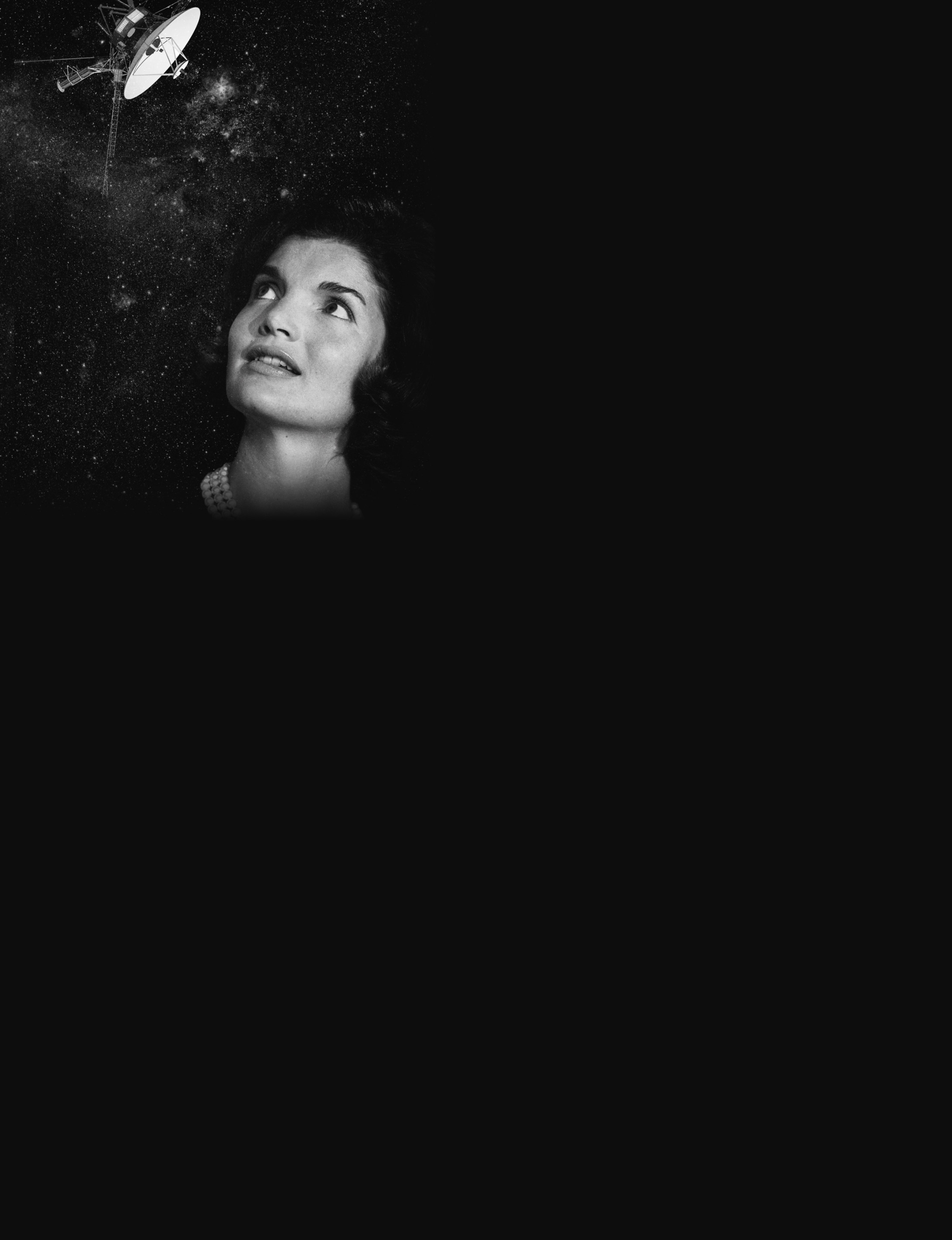
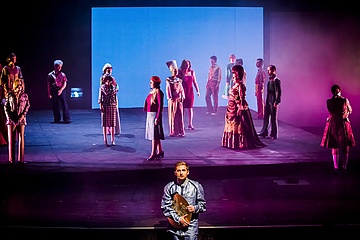
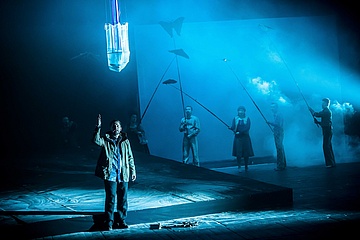
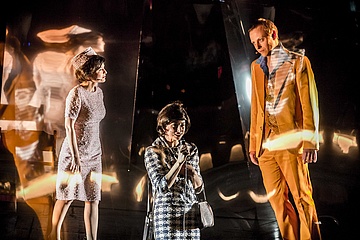
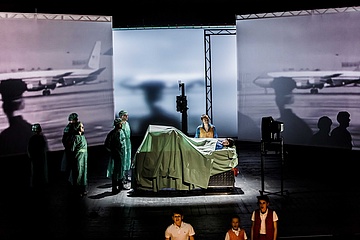
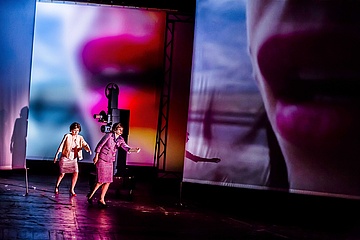
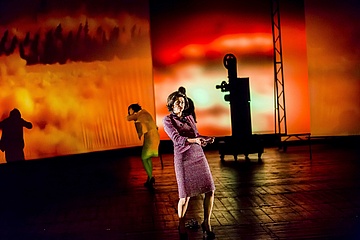
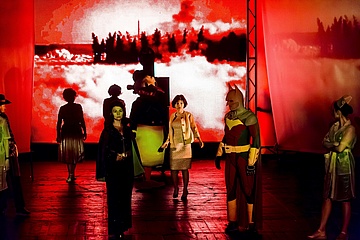
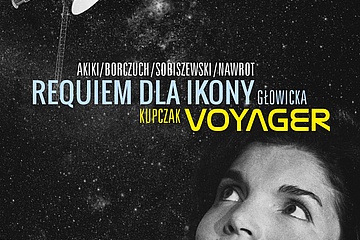
 Michał Sławecki
Michał Sławecki  Artur Janda
Artur Janda  Patrycja Krzeszowska-Kubit
Patrycja Krzeszowska-Kubit  Maciej Straburzyński
Maciej Straburzyński  Marta Ojrzyńska
Marta Ojrzyńska ![[Translate to English:]](/fileadmin/_processed_/f/c/csm_Bassem_Akiki_1037_-__c__Ksawery_Zamoyski_-_kwadrat_ae0c7bfb92.jpg) Bassem Akiki
Bassem Akiki  Michał Borczuch
Michał Borczuch  Dorota Nawrot
Dorota Nawrot  Jacqueline Sobiszewski
Jacqueline Sobiszewski  Krystian Lada
Krystian Lada  Bogdan Gola
Bogdan Gola  Danuta Chmurska
Danuta Chmurska  Kamil Sarnowski
Kamil Sarnowski 

